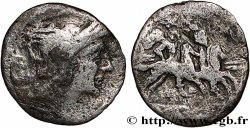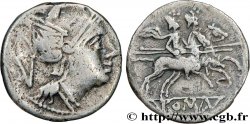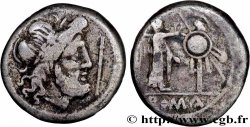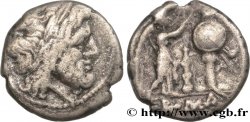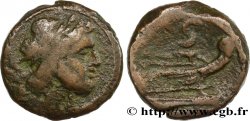brm_933632 - ROMAN REPUBLIC - ANONYMOUS Denier Serratus
недоступный.
Товар уже продан в нашем интернет-магазине (2024)
Цена: : 480.00 €
Товар уже продан в нашем интернет-магазине (2024)
Цена: : 480.00 €
Тип Denier Serratus
Дата: c. 209-208 AC.
Монетный двор / Город: Sicile
Металл: silver
Проба: 950 ‰
Диаметр: 19,5 mm
Ориентация осей монеты: 3 h.
Вес: 3,93 g.
Редкость: R2
Комментарии о состоянии
Superbe exemplaire, centré des deux côtés. Revers de style fin. Patine grise avec des reflets dorés
Ссылки в каталоге: :
Лицевая сторона
Аверс: легенда: ANÉPIGRAPHE.
Аверс: описание: Tête casquée de Rome à droite ; derrière X.
Обратная сторона
Реверс: легенда: ROMA EN RELIEF À L'EXERGUE.
Реверс: Описание: Les Dioscures, Castor et Pollux (les Gémeaux) à cheval, galopant à droite, nus avec le manteau flottant sur l'épaule, coiffés d'un bonnet surmonté d'une étoile, tenant chacun une javeline ; une roue à six rais sous les chevaux.
Реверс: перевод: “Roma”, (Rome).
Комментарий
Pour ce type, M. Crawford a relevé une estimation de quarante coins de droit et de cinquante coins de revers. Ce denier est en fait plus rare que ne le laissent paraître les différents ouvrages généraux. Pour ce type il y a deux datations possibles, en 209-208 et beaucoup plus tard. D’après M. Crawford, nous serions bien en présence d’un denier frappé vers 209-208 avant J.-C. en Sicile. Notons au passage que ce denier semble serratus. Pour cette émission, nous n’avons que le denier. Nous pourrions avoir affaire à une autre théorie que ce denier est en fait frappé beaucoup plus tard à la fin du Ier siècle avant J.-C. avec la véritable marque de valeur au revers placée dans la roue (16 as) et le fait que le denier soit dentelé.
For this type, Mr. Crawford noted an estimate of forty right dies and fifty reverse dies. This money is in fact rarer than the various general works make it appear. For this type there are two possible dates, in 209-208 and much later. According to Mr. Crawford, we are indeed in the presence of a denarius minted around 209-208 BC in Sicily. Note in passing that this last one seems serratus. For this show, we only have the denier. We could be dealing with another theory that this denarius is in fact minted much later at the end of the 1st century BC with the real value mark on the reverse placed in the wheel (16 aces) and the fact that the denier is serrated
For this type, Mr. Crawford noted an estimate of forty right dies and fifty reverse dies. This money is in fact rarer than the various general works make it appear. For this type there are two possible dates, in 209-208 and much later. According to Mr. Crawford, we are indeed in the presence of a denarius minted around 209-208 BC in Sicily. Note in passing that this last one seems serratus. For this show, we only have the denier. We could be dealing with another theory that this denarius is in fact minted much later at the end of the 1st century BC with the real value mark on the reverse placed in the wheel (16 aces) and the fact that the denier is serrated








 Cообщить об ошибке
Cообщить об ошибке Распечатать страницу
Распечатать страницу Отправить мой выбор
Отправить мой выбор Задать вопрос
Задать вопрос Consign / sell
Consign / sell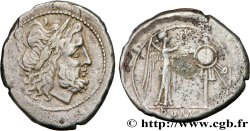
 Информация
Информация